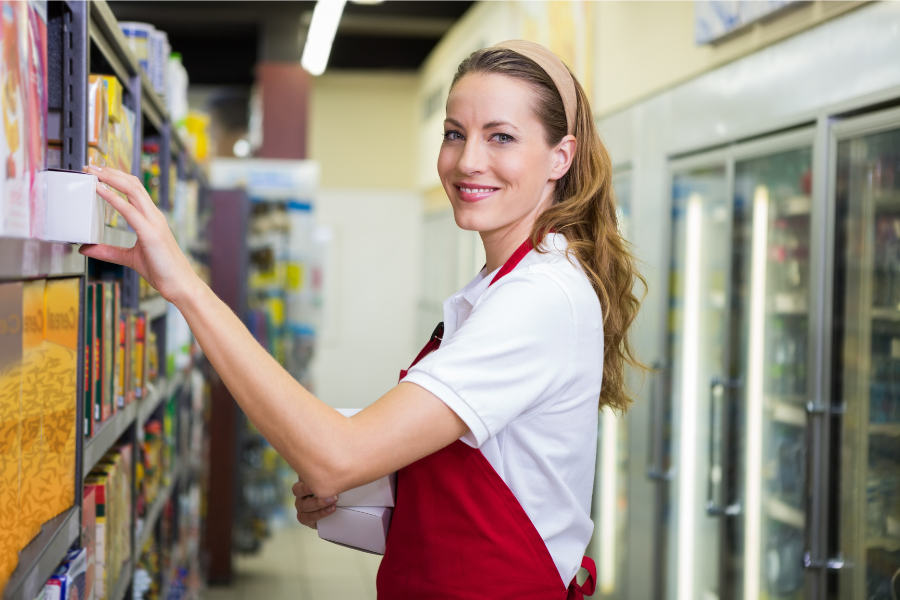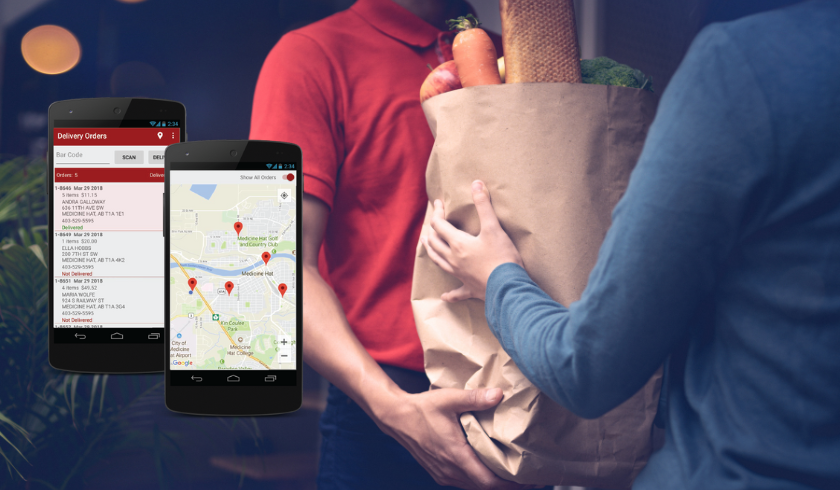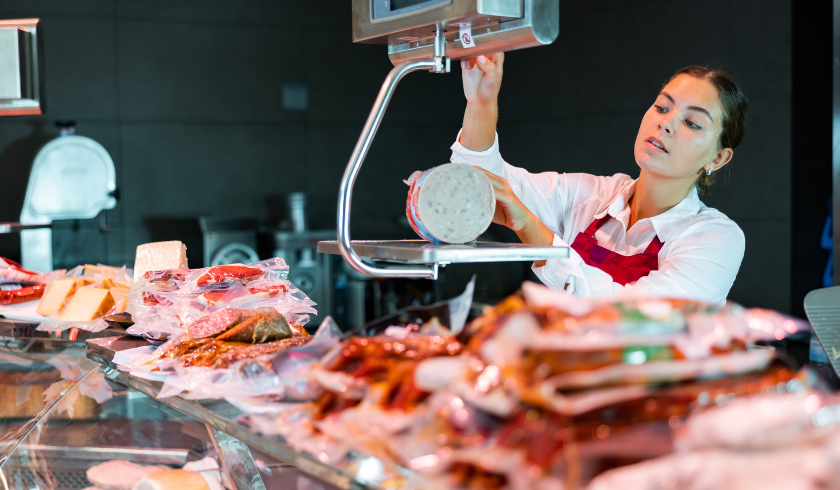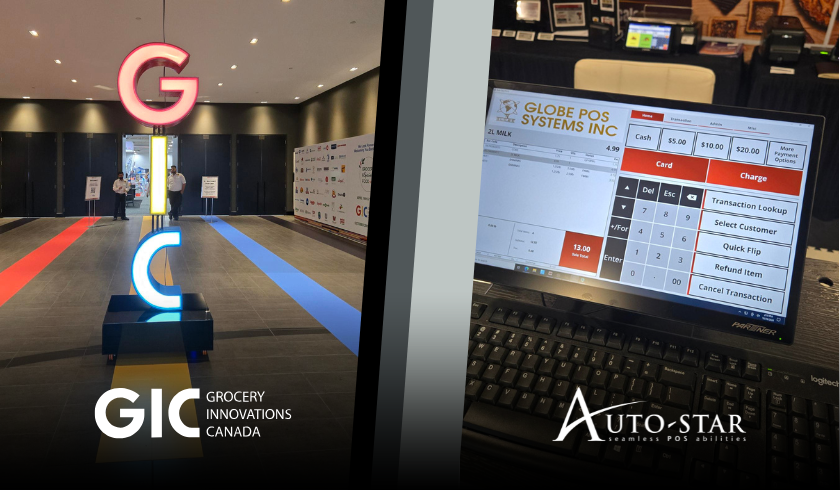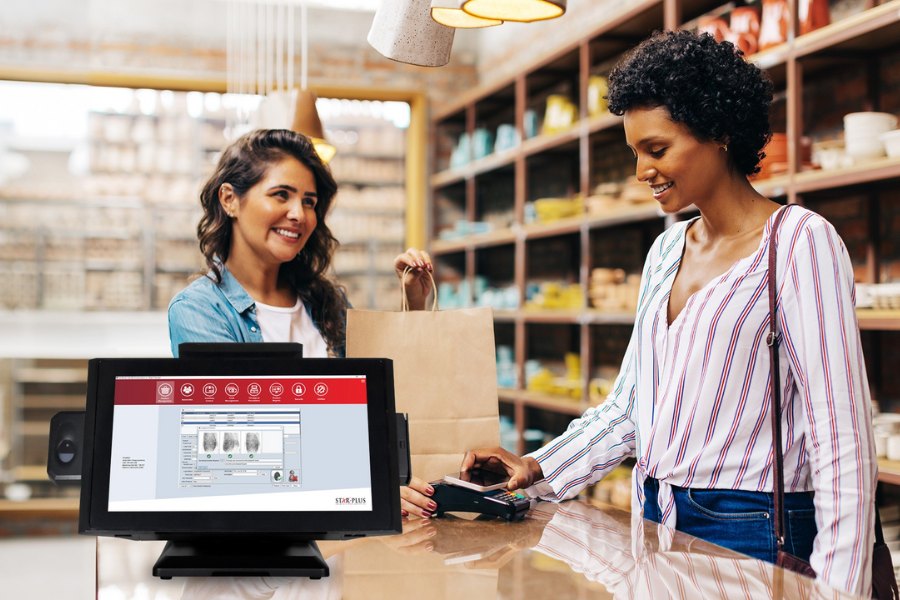Before 2020, most consumers considered grocery shopping an in-person activity. The COVID-19 pandemic forced shoppers online to get the foods and essential products they needed. However, e-commerce, supported by online grocery technology, continued when brick-and-mortar stores and supermarkets reopened. Statista reports that this trend continues, noting 30% of younger shoppers are willing to shop for groceries online even more often than in 2020.
Furthermore, consumers returned to in-person shopping with more expertise and comfort with technology. They expected businesses to provide the speed and convenience of digital engagements in-store – and they may even make decisions on where to shop based on the types of digital experiences a store provides.
As 2023 begins, grocers need to take a fresh look at consumer behaviors, competitive pressures, and technological advancements so that they can plan intelligently for success in the new year and beyond.
To help your business build a successful strategy, Auto-Star’s team of experts has compiled this list of grocery technology trends for you to consider as you plan. These trends all revolve around your grocery point of sale (POS) system as the nerve center of your business and integrations and upgrades that will help you meet new demands.
1. Self-Checkout is Becoming the New Normal
The demand for self-checkout increased by 42% in 2021, and analysts expect this trend to continue. Self-checkout gives busy shoppers a way to avoid lines, long waits, and interaction with store employees. They scan their own items, bag groceries, insert payment into the self-checkout unit, redeem rewards points or coupons, and print paper receipts, if they choose.
The time-savings and convenience for consumers are clear, but self-checkout also has compelling advantages for grocers. Self-checkout offers grocers operational efficiency and cost control during an era of labor shortages and inflation. One associate can assist shoppers at four or more self-checkouts, reducing the number of employees necessary to manage transactions per shift. You may also be able to reassign cashiers to stock shelves, keep the store clean and orderly, or work in prepared foods, deli, or other departments of your business to enhance customer experiences and increase revenues.
2. Consumers Still Want Contactless Shopping and Payment Options
The COVID-19 pandemic made people more aware of health safety best practices, and the new habits they adopted will likely continue as COVID-19 variants and other illnesses spread through the population. Shoppers may be more loyal to a store if they know they have the option to keep their distance from employees and other shoppers as they select items and make their purchases. 57% of consumers say they are more likely to do business with retailers that offer a contactless payment option
Many consumers have also realized that contactless options make shopping more convenient and frictionless. Online grocery technology that supports buy-online-pickup-in-store (BOPIS), buy-online-return-in-store (BORIS), and buy-online-pickup-at-curbside (BOPAC) gives consumers more control over their shopping journeys. They can choose how to blend digital and physical processes to accommodate their needs, schedules, and the amount of contact they’re comfortable with.
To create contactless shopping experiences, grocers must provide customers with touchless payment methods, including e-commerce transactions, contactless EMV cards, and mobile wallets, like Apple Pay and Google Pay, and smart watches or other devices that communicate payment data via near-field communication (NFC),
It’s vital to integrate your online grocery technology with a modern, omnichannel payments platform provided by a reliable merchant service provider for safe and secure payments. It’s also beneficial to securely store credit card data, using technologies like encryption and tokenization, so returning customers can make purchases with just a few clicks.
3. Grocers Discover the Benefits of Mobile POS
Although mobile POS adoption in this retail segment was low before 2020, it’s an essential grocery store technology now. 16.9% – the expected annual growth of mobile POS value from 2021 to 2025. (Statista, 2020)It enables line-busting during peak times, helping to decrease wait times and eliminate congestion that may interfere with shopping in some areas of the store. Mobile POS also enables more customer interactions, giving employees the capability to assist customers in the aisles.
POS systems running on tablets or other mobile devices make picking items to fulfill online orders more accurate and efficient. This grocery technology also facilitates inventory counts and inventory management, which will give you an efficient way to keep shelves stocked and avoid over-ordering.
Keep in mind that grocery deployments require more than tablets and software. To keep employees using mobile devices connected, you need robust wireless networking and network security to ensure you have uninterrupted connectivity and to protect your data and your business.
A business with dozens of devices can find those provisioning devices with the proper applications and security solutions and updating software and applying security patches can be extremely time-consuming. A mobile device management (MDM) solution eliminates the need to load applications and maintain devices one by one. It also provides visibility into device status and health, so grocers can schedule maintenance, deploy replacement devices, and avoid downtime.
It’s also wise to arrange for technical support from a reliable service provider to manage tablets and keep them operable.
4. Grocery Goes Omnichannel
eCommerce integration with the store’s POS system has become a necessity for grocers. Shoppers expect the convenience of multichannel experiences, such as ordering for in-store or curbside pickup and the opportunity to return online orders in the store. Additionally, online grocery technology integration with third-party platforms allows shoppers to use their favorite services for fulfillment and delivery.
Grocers expanding their businesses into eCommerce, however, will quickly learn that it requires more than launching a website. You need to spend just as much thought into how you display products on your website as you do in the store. By deploying online grocery technology that leverages artificial intelligence (AI), your website can provide personalized recommendations and experiences that make online shopping easier for your customers. The AI algorithm will also learn how to maximize revenues by upselling or cross-selling.
Additionally, grocers need to rethink floor space to enable picking and packing that doesn’t interfere with in-store shoppers. Depending on the volume of online orders you receive, you may be able to decrease retail space to create a fulfillment center. Chains with several stores in a region may choose to establish a “dark store” or micro-fulfillment center that handles picking and packing all online orders.
A new digital channel requires the technology to support it. Establish and refine processes that use your POS system, inventory management, payment solution, delivery management, and loyalty programs to craft the best experiences for your online customers. Adopting an omnichannel mindset will be key to competitiveness, brand reputation, and customer loyalty in 2023.
5. Inventory Management
Traditional and online grocery technology solutions must include a full-featured inventory management system. The system should automatically track both in-store and online purchases and update inventory data. Providing your team and your customers with real-time visibility into product availability is essential to maximizing revenues and building customer satisfaction.
However, you also need a system that helps you adapt to changes in the supply chain. Just-in-time inventory isn’t practical in an era of supply chain disruptions. With unpredictable demand, extended shipping times, and economic uncertainty, this model can result in shortages and possibly, lost customers.
Grocers need to turn to advanced inventory management systems with sophisticated algorithms to quickly adjust safe stock levels, reorder points, and supplier lead times to quickly shift to a more resilient inventory strategy. Leading systems utilize replenishment purchasing or scientific purchasing to keep shelves stocked and streamline operations with automated purchasing.
- Replenishment purchasing: This grocery store technology allows you to create accurate purchase orders easily, basing decisions on inventory sold over a period that you specify. It gives you the advantages of keeping shelves stocked, count and receive products with no redundant data entry, and optimize storage space.
- Scientific purchasing: This system uses sophisticated calculations to determine when you should order based on sales history, minimum stock levels and inventory on hand, seasonal changes, and supplier lead times. Intelligent systems can alert you of fast-moving products so you can take action to prevent out-of-stock items.
The benefits of a solid inventory management strategy can’t be overstated. It helps ensure your best-selling products are always in stock, increases revenues, makes the best use of storage space, and gives you the tools you need to operate more profitably.
6. Better Reporting and Insights
A business expanding to new channels needs to monitor their performance and keep track of operations overall. With data and insights from reporting, you can track key performance indicators (KPIs), such as average transaction price, weekly volume per store or channel, store labor percentage, inventory turnover, and sales-to-investment ratio. You should base all of your business decisions and structuring on insights from your reporting rather than insights or anecdotal information. It lowers risks and increases the chances of success.
Omnichannel and cloud-based POS solutions also empower grocers to track and learn more about their customers’ behaviors. AI and advanced analytics collect data that can help you revolutionize BOPIS, BORIS, and BOPAC processes based on customer feedback and behaviors. Additionally, you can use the data you collect to tailor promotions based on customer histories and loyalty program participation to improve marketing ROI.
Make it a Great Year
After a few years to react to rapid changes and unprecedented challenges, grocers may have the opportunity in 2023 to perfect the new revenue streams they’ve established and adapt to evolving grocery technology trends.
Evaluate the self-checkout and contactless shopping options you provide. Ensure you’re making the best use of mobile POS and reporting and that your online ordering platform and fulfillment processes are efficient. Also, assess your current inventory management system for its ability to keep up with sales on new channels and the visibility that both your team and your customers need. Then use that information to inform how to improve your operation, elevate your brand, and build your bottom line.
Ready to deploy an advanced grocery POS system that can help you keep up with all the traditional and online grocery technology trends? Start working with Auto-Star today!

